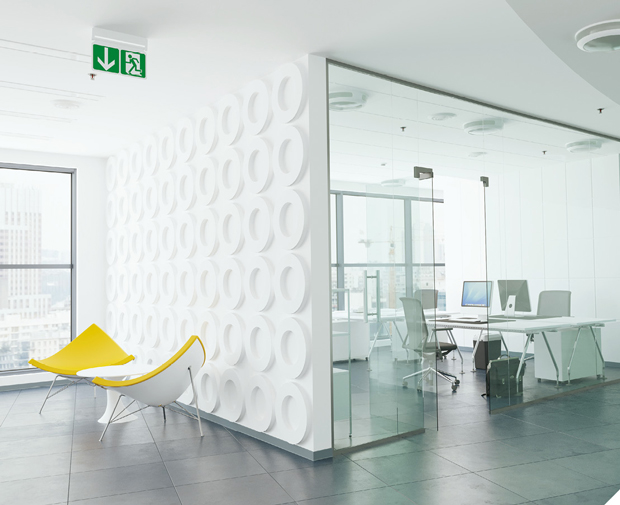Chris Anderson, Technical Manager at Ansell Lighting, on the latest rules and regulations, essential products and technologies available for emergency lighting
Something we often hear from facilities managers is that emergency lighting takes up a significant amount of their time, particularly when balancing ongoing testing with maintenance and compliance checks. The laws and standards relating to emergency lighting in the UK include: The Regulatory Reform (Fire Safety) Order 2005, The Health and Safety at Work Act, Building Regulations, The EU Workplace Directive and Fire Safety Regulations.
The most recent changes to regulations include updates to BS EN 50172:2004; the British Standard which applies to illumination specification and system testing. The revised recommendations advise that an additional bi-annual test of emergency luminaires and externally illuminated escape route safety signs should now be implemented on top of pre-existing monthly and annual tests. This revision is to ensure that luminaires are undamaged and that their intended function is not impaired due to the presence of dirt, dust or visible material degradation.
The British Standard BS EN 1838:2013 has also been revised, recommending that Adaptive Emergency Escape Lighting Systems (AEELS) should now be used in all types of buildings. AEELS are highly intuitive, advanced lighting systems that help guide building occupants to safety. Using sensors and monitoring devices they can detect changes in the environment, harnessing intelligent control technology to automatically modify factors such as escape route direction, the visibility of emergency signage and lighting levels on escape routes dependent on changing conditions.
Adhering to these regulatory changes is essential for ensuring the safety and well-being of building users. Non-compliance could lead to severe consequences, both legally and in terms of safety. Up-to-date emergency lighting systems are not just a legal requirement; they are a critical factor in preventing injuries and fatalities in emergency situations.
LIGHT AREAS
Emergency lighting is typically split into three distinct areas: open area lighting (or anti-panic lighting), high-risk task lighting and escape route lighting. For escape routes, emergency exit signs combine cutting-edge design with high functionality to guide occupants to safety.
When it comes to open and high-risk task areas, emergency configured downlights, twin spots, and bulkheads are reliable lighting options that offer powerful, versatile illumination.
Something many organisations fail to overlook is the installation of fire-rated downlights (FRDs). Slowing the spread of fire, FRDs restore the fire integrity of a ceiling where a hole for recessed lighting has been cut into it. Fitted with an intumescent pad which swells up when it reaches a certain temperature, FRDs seal the hole in the ceiling in the event of a fire, providing a protective barrier to give occupants more time to escape the building.





